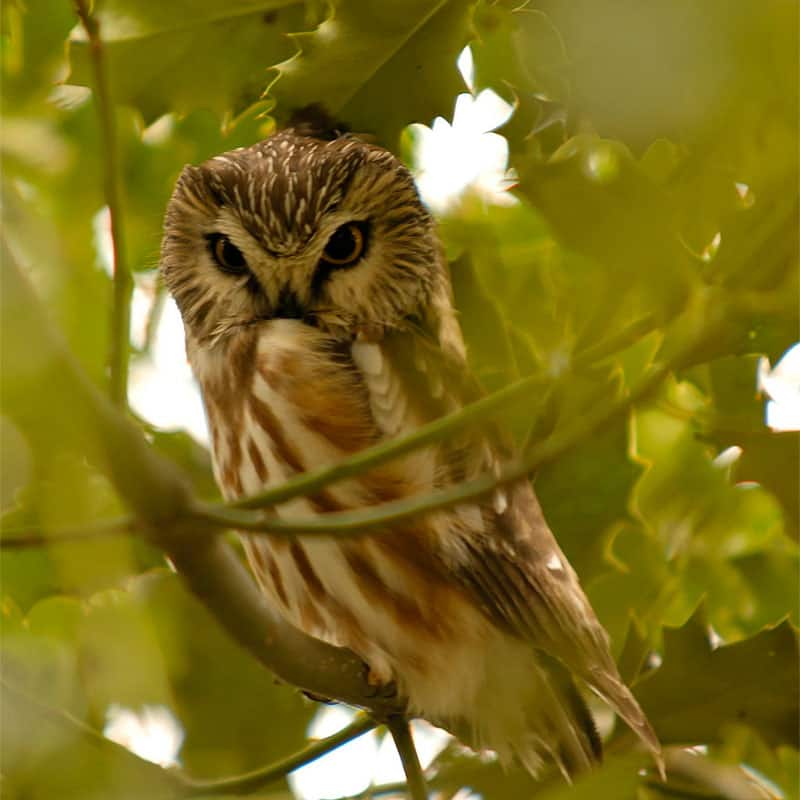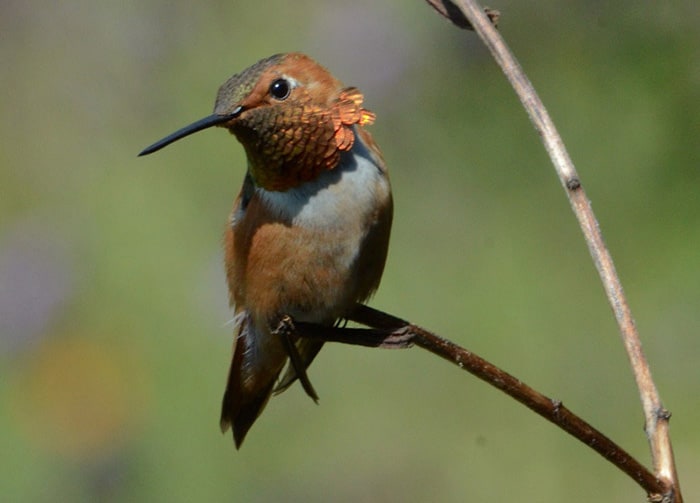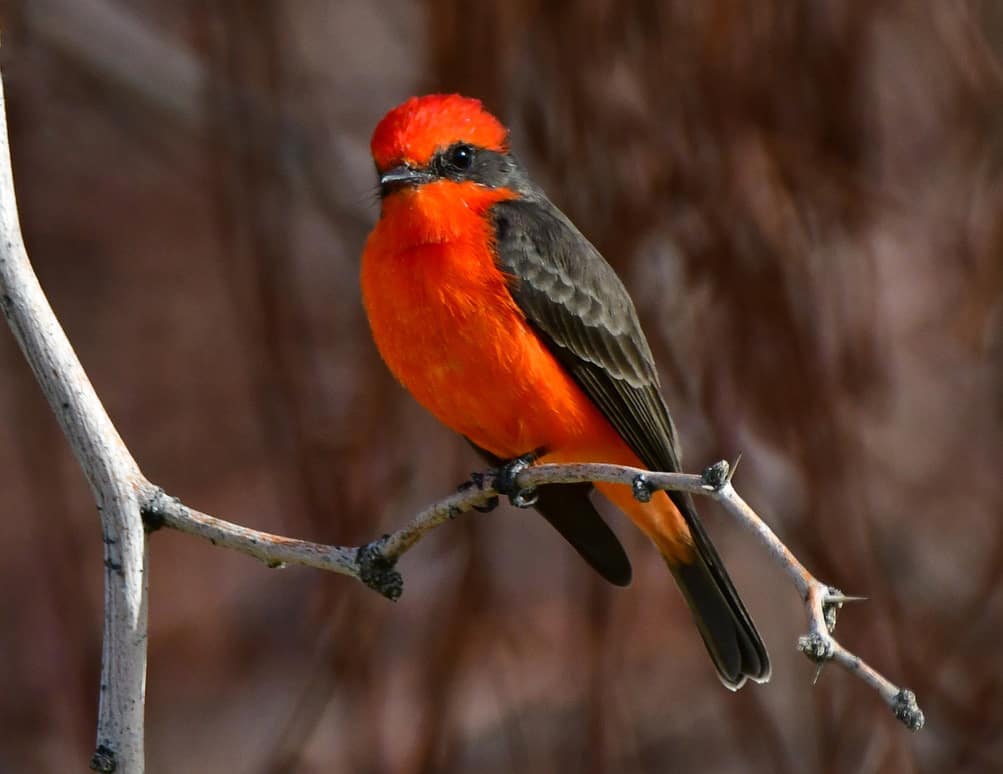Winter Birds of Illinois (December, January, February)
Winter for bird watchers officially starts in Illinois during the Christmas Bird Count season. Throughout the state, beginning, intermediate, and advanced birders join forces to count every bird they see for one day. The counts occur beginning in mid-December and ending mid-January and some nature lovers enjoy partaking in several counts throughout the season. In southern Illinois, birders count white-crowned sparrows, Carolina wrens, yellow-rumped warblers, and even an occasional lingering or wintering eastern phoebe, while in the north, birders are tallying scoters, wintering ducks, and wintering gulls resting in large flocks on Lake Michigan.
Winter is a time for gull and owl species that breed farther north to come to Illinois for more food. Ring-billed gulls live year-round in Illinois. But from December through March, the Iceland, Thayer’s, and glaucous gulls join them. Identifying these species can be difficult, so a host of bird clubs has created the annual gull frolic at Winthrop Harbor, Illinois. Here you can watch presentations about gull identification in the warmth of a club house, then venture outdoors to look through scopes set up by expert gull watchers who will help you learn the finer points of identification. Other good places to watch gulls in winter include Starved Rock Lock and Dam and Peoria Lock and Dam.
Locks and dams along the Mississippi and Illinois rivers, also attract bald eagles in winter. Illinois may have one of the highest winter populations of bald eagles in the nation. Eagles visit dams where turbines stun shad and other fish, making them easy prey. Sometimes 50 or more bald eagles, juveniles and adults, can be counted at one point along the Mississippi River at such places as Mississippi Palisades State Park during winter. The colder the winter, the more the ice on our lakes and rivers concentrates the eagles along the locks where water remains open.
Where there’s open water in winter, you’ll also find geese as well as mergansers, scaup, goldeneyes, and other diving ducks. Thousands of snow geese winter along open rivers and lakes in central and southern Illinois, and Canada geese winter statewide, partaking of the leftover corn and other agricultural crops in fallow fields.
Winter finches and northern shrikes that came to Illinois at the end of fall remain throughout the winter where they can find food. Once a shrike establishes its territory, it remains there, allowing birders a chance to observe it if they are patient. The northern shrike is seen mostly in northern Illinois at places such as Glacial Park in McHenry County and the north unit of Illinois Beach State Park.
Finches such as red and white-winged crossbills visit pines and spruces—the Morton Arboretum, Illinois Beach State Park, and Sand Ridge State Forest attract these birds in winter. You may also see white-winged crossbills as well as pine siskins and common redpolls at backyard feeders, where they are attracted to sunflower seed and thistle, or Niger, seed. Other small songbirds that spend summers farther north and winters in Illinois include snow buntings, lapland longspurs and American tree sparrows. The buntings and longspurs feed in fields and short grassy areas. When the snows fall, they move to roadsides searching for grains blown there by the wind. Tree sparrows prefer open areas dotted with shrubs, which mimic their northerly breeding grounds just south of the tree line.
If you love owls, you’ll love winter birding in Illinois. Several owl species also come to Illinois from the North to spend the winters. These include the northern saw-whet, long-eared, short-eared, and snowy owls. While the saw-whet and long-eared owls roost by day and hunt actively by night, you may see the snowy and short-eared owls hunting by day, particularly when the skies are overcast with clouds. Signs of the owl’s presence include pellets, regurgitated pieces of bone and fur the birds can’t digest. If you see some whitewash, (bird excrement) on a cedar tree and pellets at the base, look up—you might glimpse the 6-inch-tall northern saw-whet owl peering at you or asleep on a branch. Morton Arboretum in northern Illinois and Eldon Hazlet State Park farther south often hold saw-whet owls in winter. In winter, long-eared owls roost in evergreens and willow stands, while short-eared owls roost in grasslands. The best chance to see the short-eared owl is at dusk when they come out to feed on large grasslands; this species’ numbers continue to decline in Illinois both as a breeder and winter visitor due to loss of habitat.
The great horned owl actually nests in winter; already in November and December, the male courts the female with his deep hoots, which can be heard even in suburban neighborhoods. By January, the female is sitting on eggs in an old squirrel or hawk nest high in a tree. Young great horneds hatch while snow is still falling.
During years of low food abundance on its tundra breeding grounds, the snowy owl moves south to find food—rarely farther south than central Illinois and typically only in northern Illinois. Some years, 75 or more snowy owls will venture into Illinois; other years birders are lucky if they find even one. Snowies typically choose cornfields or fields adjacent to Lake Michigan for hunting and roosting. Snowy owls, which eat voles up north, but will take wintering ducks and other birds, for sustenance.
Several hawk species also live in Illinois year-round and can be seen in winter, but a few come from the North. Red-tailed hawks and American kestrels (a much smaller raptor than the red-tailed) hunt the open fields and sit atop telephone poles and other perches to watch for movement of critters below. Both of these hawks are widespread and common in Illinois year-round. Cooper’s hawks visit neighborhoods to catch birds attracted to feeders. During lean food years, the rough-legged hawk winters to Illinois, too. This beautiful bird with a black belly can be seen hovering over a field before pouncing on its prey, and there’s always the chance for the rare prairie falcon or gyrfalcon to show up in Illinois on a cold winter day.
In middle to late February, the early red-winged blackbirds return to southern Illinois; a few may have even wintered there. For many birders, tired of the cold, the arrival of red-winged blackbirds, as well as the early singing of song sparrows, signals the beginning of spring and the promise of another spectacular migration to come.



